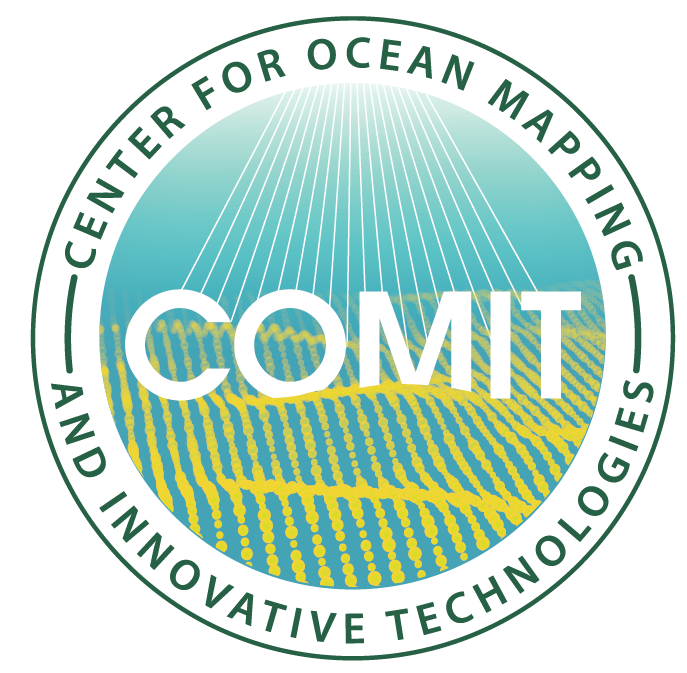Above: Chief Scientist, Matthew Hommeyer (left), and FIO Science Technician, Andrew Warren, prepare to deploy the underway sound velocity profiler (underway SVP) towfish aboard the R/V W.T. Hogarth in February 2021.
After three postponements due to COVID-19 and a slew of weather fronts ending with Hurricane Zeta in October 2020, scientists from the Center for Ocean Mapping and Innovative Technologies (COMIT) were able to safely set sail to the northeastern Gulf of Mexico in February 2021. Their mission aboard the R/V W.T. Hogarth: to map the seafloor in areas that have been prioritized by NOAA’s Integrated Ocean and Coastal Mapping Program (NOAA IOCM; see map below), the Florida Coastal Mapping Program (FCMaP), Florida’s Division of Aquaculture, and NOAA’s National Centers for Coastal Ocean Science Coastal Aquaculture Siting and Sustainability (NCCOS-CASS). Despite bathymetry being important to fishing operations, safe navigation, and industrial shipping, to name a few, modern seafloor depth information is available for less than 2% of the Big Bend region.
Read the full story here!

Recent Comments